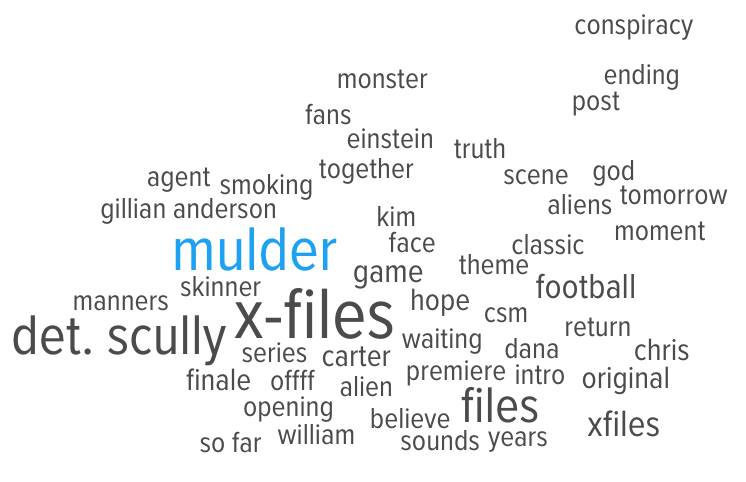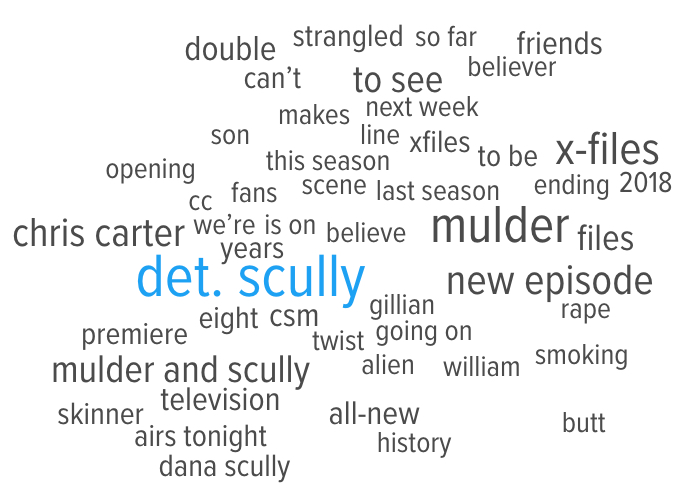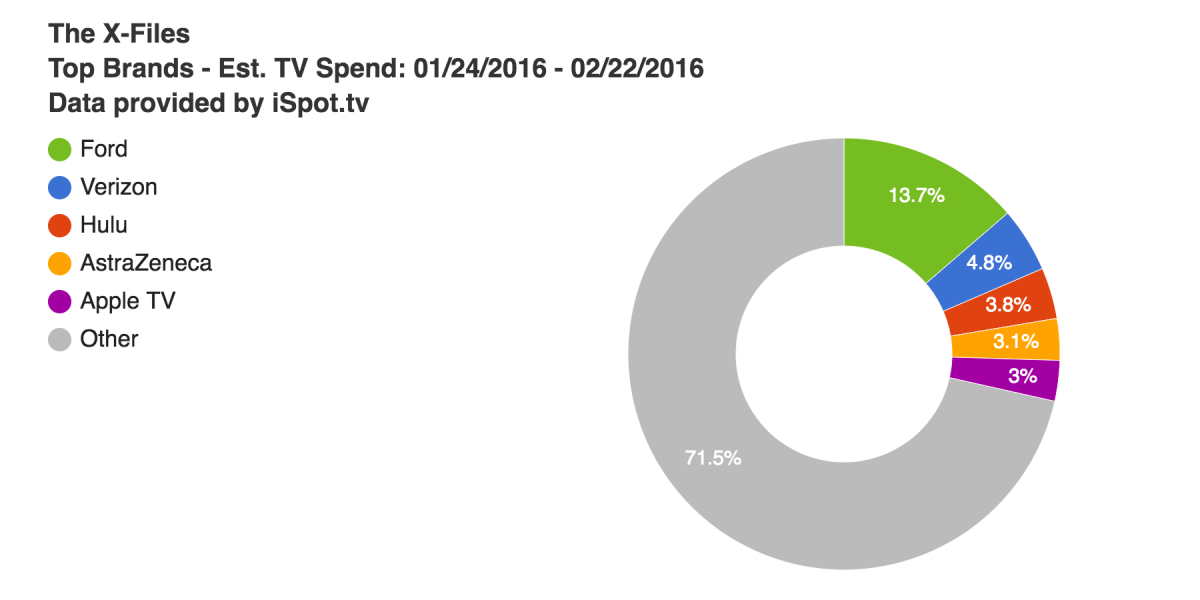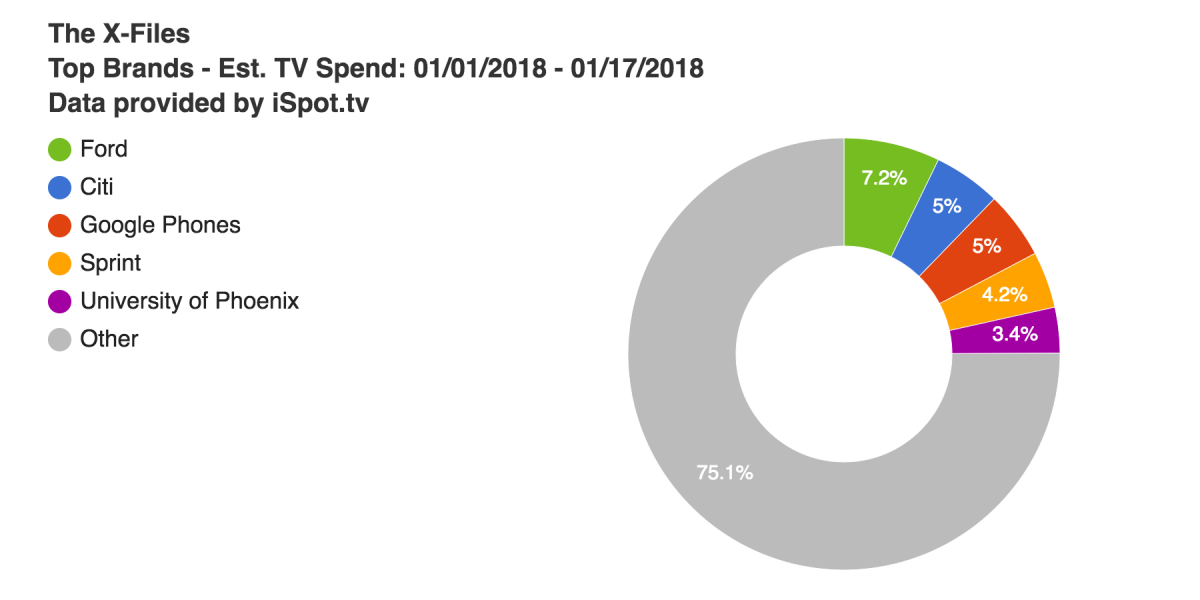‘The X-Files’: Fans and Brands Still Believe

The FBI’s dynamic duo returned to TV screens this month and fans couldn’t wait to experience the next installment in the X-Files saga on Fox. We partnered with Canvs to take a look at viewer reactions since the show first returned in 2016 after a 14-year hiatus, including how the most recent season is shaking out so far. Also below: a look at top advertisers backing the show, with data from iSpot.tv.
First, the long view: Season 10 in 2016 accumulated a total of 181,640 Emotional Reactions (ERs) on Twitter, with the premiere accounting for over 40% of ERs for the whole season — fans were clearly psyched to have the show back on the air after so long. Love led when it came to the emotional breakdown of conversation (25.9%), followed by excitement (12.7%) and enjoyment (9.3%). And it wouldn’t be The X-Files without a dash of crazy thrown in (9.1%).

As you’d expect, main characters Fox Mulder (David Duchovny) and Dana Scully (Gillian Anderson) were two of the primary drivers of conversation, with Mulder inspiring slightly more discussion than Scully (9.2% vs 7.7%).

Season 11, which premiered on Jan. 3, has generated 34,360 ERs across its first three episodes so far (there will be 10 total this year, and it’s worth noting that Gillian Anderson has announced she will not return after this season). The ER breakdown has been similar to season 10, with love accounting for 23.3%, excitement at 14.1%, enjoyment at 10.7% and crazy at 9.7%.

But this time around it’s Scully who’s prompting more conversation — 8.1% of comments mention her, while 6.5% are talking about Mulder.

According to iSpot.tv, which has attention and conversion data from more than seven million smart TVs, Ford, Verizon and Hulu were three of the top spending brands during season 10, and Ford has returned again as the top spender thus far in season 11.


When it comes to keeping viewer attention, Apple and the University of Phoenix were two of the brands with the highest iSpot Attention Index during the the first few episodes of season 11. (iSpot.tv attention analytics measure the length of time an ad appears on a TV screen and the propensity of consumers to interrupt “ad play.”) This spot for the Apple iPad had an iSpot Attention Index of 180, receiving 80% fewer interruptions than average (interruptions include changing the channel, pulling up the guide, fast-forwarding or turning off the TV), while this ad from the University of Phoenix had an iSpot Attention Index of 176, receiving 76% fewer interruptions.
Broadcasting & Cable Newsletter
The smarter way to stay on top of broadcasting and cable industry. Sign up below
